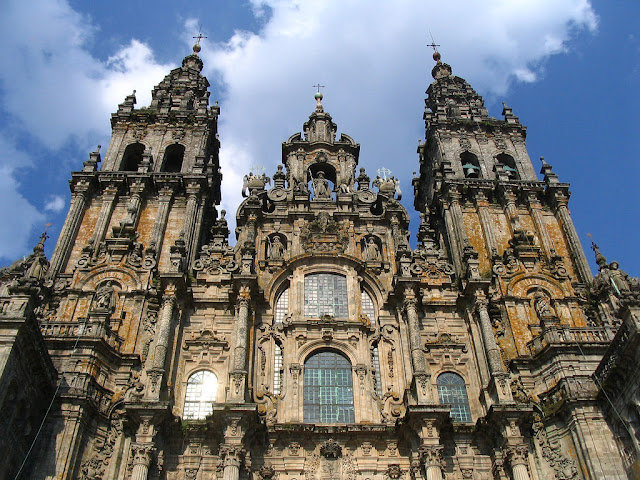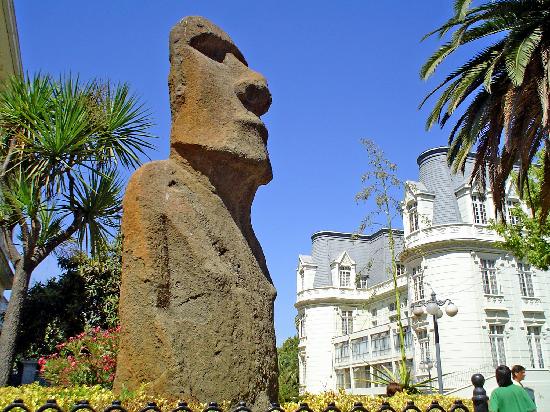Chile is a country occupying a long narrow strip of land in South America. It’s squeezed between the Andes Mountains and the Pacific Ocean. The coastline extends for over 2,700 miles and the country is never more than 110 miles in width. Located directly along the Pacific “Ring of Fire,” Chile has around 2,085 volcanoes, 55 of which are active.
Its unusual shape and vast length make for a widely varied climate. In the north is the world’s driest desert – the Atacama, while the south is made up of glaciers, fjords, and lakes. The central part of the country is a median of the two and consists of a more Mediterranean climate. The Andes Mountain range runs the entire length of the country and forms a natural border to Argentina. Chile’s diverse geography gives it the luxury of having a vast array of physical features. You can be hiking up in the mountains and within hours, lying on the beach with a pisco sour.
Santiago
Santiago is the capital of Chile and sits in a large bowl-shaped valley surrounded by mountains. With the Andes towering nearby, a clear day gives Santiago one of the most impressive backdrops of any capital city in the world. Unfortunately, the same mountains that provide beauty, also prevent winds from shifting the air trapped in the valley. This causes Santiago to frequently be covered with a dense blanket of smog, a common complaint among both tourists and locals.
Santiago is a huge city divided into 32 comunas (districts) and each one is headed by a mayor. Despite its size, getting around is fairly easy. To cover great distances, the subway is fast and efficient. However, much of the city can be explored on foot. The main street running east – west through the city is the Avenida Libertador Bernardo O’ Higgins. This broad Avenue runs parallel with the # 1 metro line which provides easy access to reach one side of the city from the other. Two things that you’ll see a lot of in Santiago are little shoe shine booths, which are scattered throughout the city and dogs. I was very suprised at the number of homeless dogs. You’ll find them lying next to streets, by subway entrances, even in store doorways. And they’re always sleeping during the day which means they must look for food at night. Anyone seen “I am Legend” with Will Smith?? Yikes!
The city center encompasses most of Santiago’s sights and attractions, which are scattered around the main square known as Plaza de Armas. This is a beautiful place to spend the afternoon and people watch. Always full of activity, you’ll see everything from portrait painters to chess players. On the west side of the Plaza sits the beautiful Catedral Metropolitana. Other popular buildings surrounding the square include the Museo Historico Nacional and the Correo Central.
Running south from the west side of the Plaza de Armas is Paseo Ahumada. This is the city’s busiest pedestrian street where you’ll find all types shops and street performers. Small speakers line the buildings playing instrumental versions of 80’s hits like Madaonna’s “Borderline.” It’s an interesting place to walk and can get very crowded at night. If you enjoy espressos, stop by the famous Café Caribe and Café Haiti, where neatly dressed businessmen drink their coffee served by tightly dressed, short-skirted woman.
If you take Paseo Ahumada north, it will turn into Calle Puente before reaching the Mercado Central. A wonderful place to have lunch, this structure is packed with restaurants as well as a fish market whose stalls are stocked with salmon, oysters, mussels, and crabs so fresh that their legs are still moving.
Other popular sights in the city center include the Museo de Bellas Artes and the Presidential Palacio de La Moneda. Cerro Santa Lucia is a nice spot to get away and relax. Its elevated paths and many trees form a barrier to the outlining streets making you forget you’re in the middle of Santiago.
Just east of the city center on the other side of the River Mapocho, lies Bellavista. A mixed residential and artistic neighborhood, it houses many bars and restaurants. You’ll also find several theaters and at night, the street comes alive with musicians and handcrafts being sold from the pavement.
The number one item on a tourist to Santiago’s checklist should be going to the top of Cerro San Cristobal. From here the view of the surrounding city and Andes Mountains can be quite stunning if it’s a clear and sunny day. The peak is 300m high and is marked by a 22m tall statue of the Virgen de la Inmaculada. Resembling that of Christ the Redeemer in Rio de Janeiro, The statue overlooks the city with an aura of protection. The easiest way up Cerro San Cristobal is to take the funicular from the station at the north end of Pio Nono in Bellavista. It first stops at a small zoo before continuing up to the Terraza Bellavista where you get out. From here, it’s just a short walk up the steps to the huge white Virgin. When you buy the funicular ticket, purchase a ride on the teleferico (cable car). This mini-gondola provides an exciting ski-lift style ride down to the bottom of the hill.
Much of Santiago can be explored in a day or two. But with many excursions being only a few hours away, it makes for a great base while exploring the surrounding region.
Cajon del Maipo and the Andes
With the close proximity of the Andes, there are a number of adventures to choose from. Traveling southeast toward San Jose de Maipo, you’ll find yourself in the Maipo Valley, or Cajon del Maipo as it’s called in Spanish. Here you can hike, raft, horseback, and mountain bike. A great place to hike is the Monumento Nacional El Morado. Located just beyond the small town of Banos Morales, it has a well marked trail to the lake de Morado leading up to the San Francisco glacier. The whole way, you’re rewarded with breath-taking views of the towering El Morado itself, which stands 5060m tall.
There are a number of ski resorts just a short drive from Santiago. These include Lagunillas, Farellones, La Parva, Valle Nevado, and Portillo which is the most prestigious.
Portillo is a very classy place. There are no condos, just one hotel. The restored 1940’s Hotel Portillo sits on the shore of the Laguna del Inca. Just minutes from the Chile-Argentina border, its slopes and powdered snow have made it a mecca for skiers and snowborders around the world.
Valparaiso and Vina Del Mar
Another excursion opposite the mountains is west to the coastal cities of Valparaiso and Vina Del Mar. Although sitting right next to one another, these locales are worlds apart. Valparaiso was one of the first Chilean cities founded by the Spanish and has been a thriving port for centuries. It’s spread out over many steep hills colorfully dotted with aging homes and shacks. Highlights include the Turri Clock, Plaza Sotomayor, La Sebastiana, El Mercuriode Valparaiso, and the Artillery Funicular.
Vina Del Mar, also known as the Garden City is a very popular tourist and beach destination. With its elegant hotels, a casino, and numerous tasty restaurants, vacationers flock here every summer. The two main attractions are the Jardin Botanico Nacional which contains over 3,000 plant and tree species from around the world, and the Museo Francisco Fonck which has one of the most important Easter Island collections in Chile. One of the best pieces stands in a garden, just outside the entrance: a stone Moai, brought to Chile from Easter Island by the Sociedad Fonck in 1950.
Chile is an ideal country to visit for those who enjoy outdoor activities. With its sandy beaches, picturesque fjords, and snow capped Andean Peaks, there’s much to explore. As previously mentioned, I recommend staying in Santiago and using it as a base to explore the surrounding regions. It’s a perfect place to see and experience the Chilean culture and allows easy access to many outlying adventures.








 American Dollar Converter
American Dollar Converter






Speak Your Mind